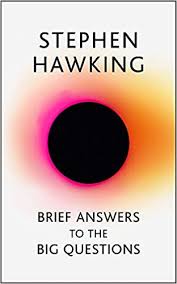Science & Technology
|
|||
|
|
Subscribe to Time magazine at special rates in Pakistan
|
||
Pakistan's premier website that covers current affairs and news.
![]()
![]()
![]()
More Stories on Science and Technology
· Microsoft’s free upgrade to its latest operating system is about to expire
QWERTY effect
Stories from Pakistan
50 exoplanets discovered in deep space by advanced artificial intelligence
More than 4,000 exoplanets have been discovered so far by astronomers. Now, artificial intelligence has discovered an additional 50, thanks to old data from NASA.

“The algorithm we have developed lets us take fifty candidates across the threshold for planet validation, upgrading them to real planets," the study's lead author, University of Warwick professor David Armstrong, said in a statement. "We hope to apply this technique to large samples of candidates from current and future missions like TESS and PLATO."
Science and Technology Magazines
“In terms of planet validation, no-one has used a machine learning technique before," Armstrong added. "Machine learning has been used for ranking planetary candidates but never in a probabilistic framework, which is what you need to truly validate a planet. Rather than saying which candidates are more likely to be planets, we can now say what the precise statistical likelihood is. Where there is less than a 1% chance of a candidate being a false positive, it is considered a validated planet.”
To read full content subscribe to the National Geographic magazine
The 50 exoplanets vary in size and scope. Some of them are as large as Neptune, while others are smaller than Earth. Orbits also vary in length, with some approaching 200 days in length, while others orbit their star in just one day.
With the AI having been trained and deemed faster than other techniques, the researchers hope that planetary scientists will use multiple methods to search for exoplanets.
"Almost 30% of the known planets to date have been validated using just one method, and that’s not ideal," Armstrong added. "Developing new methods for validation is desirable for that reason alone. But machine learning also lets us do it very quickly and prioritize candidates much faster. We still have to spend time training the algorithm, but once that is done it becomes much easier to apply it to future candidates. You can also incorporate new discoveries to progressively improve it."
Armstrong hopes the algorithm could be used to analyze NASA's Transiting Exoplanet Survey Satellite (TESS).
A survey like TESS is predicted to have tens of thousands of planetary candidates and it is ideal to be able to analyze them all consistently," the researcher said. Fast, automated systems like this that can take us all the way to validated planets in fewer steps let us do that efficiently.”
The study was published in the Monthly Notices of the Royal Astronomical Society.
Since its launch in April 2018, NASA's Transiting Exoplanet Survey Satellite (TESS) has found a great number of exoplanets, including a so-called "missing link" and one it "rediscovered."
In January 2020, TESS discovered its first Earth-sized planet in a star's "habitable zone," an area that could allow for liquid water to be on the surface.
More than 4,000 exoplanets have been discovered by NASA in total, approximately 50 of which were believed to potentially be habitable as of September 2018. They have the right size and the right orbit of their star to support surface water and, at least theoretically, to support life.
By Sale (Popularity) :
1. @internet
2. Scientific American
3. Popular Science
Editor's Choice (Content value):
1. New Scientist
2. Wired (UK)
3. Focus
1 September 2020
PayPal allows Bitcoin and crypto spending
50 exoplanets discovered in deep space by advanced artificial intelligence
Comments are published after editorial approval: 0 Be the first to comment...
Share your views at feedback@newsflash.com.pk
![]()
![]()
![]()
![]()
![]()
Send your contributions at editor@newsflash.com.pk


